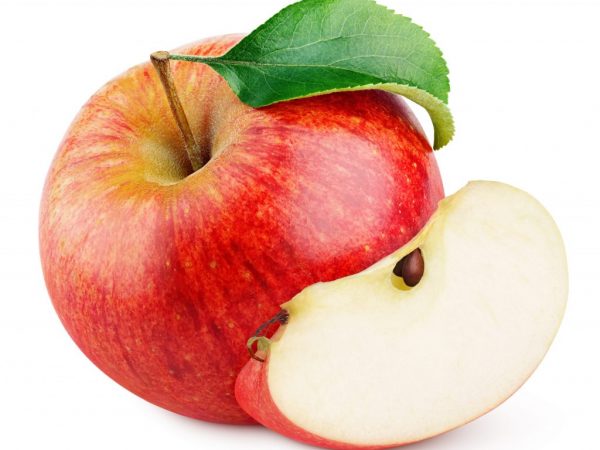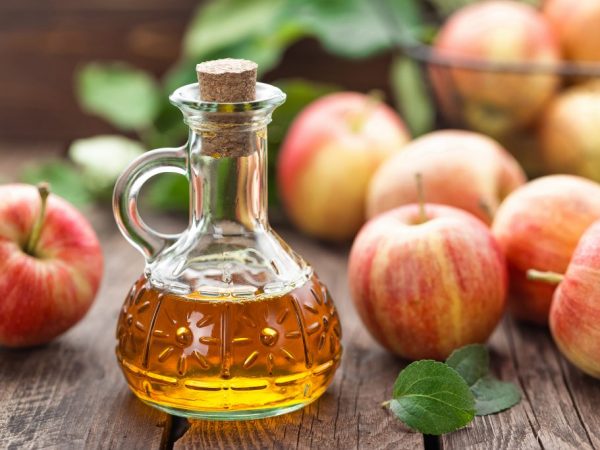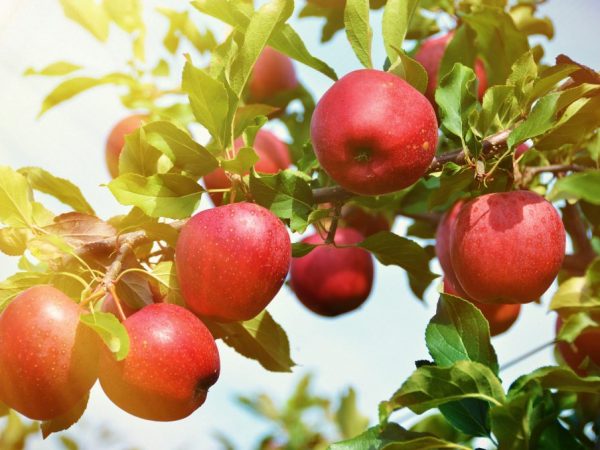Description of the apple tree Tolunay
In order to grow a variety of fruit trees in different weather conditions, breeders are creating more and more new varieties. The Tolunai apple tree has large, juicy and bright fruits. Its peculiarity is that it is resistant to low temperatures.

Description of the apple tree Tolunay
Characteristics of the variety
Siberia has a short summer, which does not allow trees, bushes and flowers to grow normally. Therefore, scientists have tried to develop new hybrid forms of fruit trees that are resistant to the harsh climate.
This turned out to be the apple variety "Tolunai", which, according to the description, was discovered only at the end of the 20th century, in the 80s.
Description of the tree
The tree is neat and small. Its crown has a rounded shape, it is rare, but requires periodic pruning. The branches of the tree are small, which is why it looks so compact. They grow from the trunk at an angle of 45 °, they are usually dark brown in color.
The leaves of the tree are light green in color, have a round shape, and its ends are pointed with small teeth.
Description of the fetus
The fruits of the apple tree are large, all truncated-conical in shape, tend to grow on a branch in groups of 3-4 pieces.
One apple weighs from 90 to 110 g, the maximum weight is 130 g.
Their color is usually yellow, maybe with a golden or greenish tint. On the one hand, the apple has red or brown stripes. The section shows a creamy flesh. It is fine-grained, soft and juicy.
The seed box is located right in the center, and the seeds of an already ripe apple are always brown.
Taste
In terms of gustatory characteristics, the apple has a pronounced sweet taste with a slight hint of sourness (acidity - 0.4%). A big plus of the Tolunay apple is its distinct apple flavor.
The composition contains:
- sugar - 13%;
- vitamin C - 11 mg;
- dry matter - 16.5%;
The apple tree is winter-hardy, although in Siberia it is rated as average in terms of frost resistance. All this is due to the fact that there is often at low temperatures, somewhere - 40 ° C, the crown and branches of the tree tend to freeze. This is easily corrected with the onset of spring, because the tree recovers quickly.
Planting and leaving

The best breeding season for apple trees is spring.
In order for the apple tree to take root and give a good harvest, you need to plant it correctly. The best period for planting is spring (when the ground is already warm enough).
If the procedure is carried out in the fall, the seedling only needs to be dug in 5 cm. To prevent the tree from freezing, it is sprinkled with peat and covered with branches.
Soil is also important for the apple tree: it does not like acidic and clayey soil, a mixture with sand is more suitable. The best soil is loam.
It is imperative that a drainage system is made so that groundwater, which lends itself to freezing and harm the root system of the tree, recedes.
Step-by-step instruction:
- For planting, the soil is specially prepared: they remove excess soil, where there should be a tree, and instead of it, fertilizers are poured.
- First, pits are dug 40 cm deep. Prepared soil with peat, humus and phosphate is poured onto the bottom.For drainage, broken brick or crushed stone is poured to the bottom.
- The seedling is placed on the bottom, its roots are carefully straightened and buried so that only the root system is hidden.
Follow-up care
Watering
After planting, the seedling needs to be watered with 30 liters of water, preferably from a hose, in order to distribute it evenly. You need to fertilize the tree regularly so that it is protected from frost and adapts faster.
There is no specific irrigation scheme: if the weather is dry, it is worth helping the plant and watering it.
Pruning
Branches that compete with the trunk should be cut completely. This will form the correct crown and increase fruiting. The first time the crown is cut by 20-40 cm, and subsequent times by 10-15 cm.
Later, dry branches are cut or cut off from an adult tree, so it easily takes root.
Disease prevention
Tolunay is a disease and pest resistant variety. Nothing threatens him, provided the weather is favorable for him.
After rains and frost, the tree can easily suffer from fungus. To avoid such a situation, the trunk must be treated with Bordeaux mixture in time. As a protection against pests, ordinary slaked lime is suitable.
This variety is not particularly fond of wind, long winters and noticeable temperature fluctuations. It is resistant to moniliosis, and scab can only infect leaves. To keep the tree from pests, it needs a sufficient amount of nitrogen.
Pollination
The apple tree of the Tolunai variety is self-fertile, therefore it does not require other neighbors for fruiting. But if 1-2 other types of apple trees grow in the garden, it will not be superfluous.
Ripening and fruiting

Apples keep well
In the first year after planting, the apple tree should not be allowed to bear fruit. If it begins to bloom, you need to pluck all the blooms so that it takes root faster and its subsequent harvests are more impressive.
The first harvest is harvested 3-4 years after planting the tree. Flowering is short-lived, like other Siberian varieties.
Apples ripen at the end of August, and they can be picked at the beginning of September. It is better to take fruits that are slightly unripe, on which there is still no blush, so that they are stored longer.
You can get 5-6 tons of apples from one hectare of orchard. Every year the yield will grow more and more, therefore, already in 7 years after planting, 25 kg of fruit can be harvested from one tree.
Large and whole (undamaged) fruits are chosen for sale. They are solid so they won't break or injure. With proper storage, they can lie for a month and a half after removal.
Features of growing in the regions
Before planting an apple tree, you need to take into account several points in terms of territorial indicators in the description of the variety. For cultivation in Siberia and cold regions, the tree must be frost-hardy enough and withstand drafts.
The fruit should taste good because tart apples can also be eaten from wild trees. It is important to take into account the size of the fruit and the level of yield. A mandatory indicator is keeping quality. It is important that apples can be stored for at least a month.
Gardeners reviews
According to the estimates of people who have already grown the Tolunai apple variety, many conclusions can be drawn. Some are surprised that such large, tasty and juicy apples could grow in Siberia. Their appearance pleases gardeners, because the apple tree from the side looks cute, neat and small. Its branches are beautifully and evenly arranged, forming a beautiful crown.
The good news is that the tree is resistant to scab and other types of diseases and pests. It quickly takes root in the area and does not require vigilant care, and its yield is high.
With Tolunay, you can sell not only apples, but also seedlings.
They use the fruits for jam, jams, drying, boil compotes from fresh apples, because it tastes sweet and sour, which is why it quenches thirst well. On a diet, you can bake apples in the oven.
In Siberia, apple trees grow up to 50 years, although only 12 bear fruit.In order for a tree to give a good harvest in such a short period, it must be properly planted and looked after.

